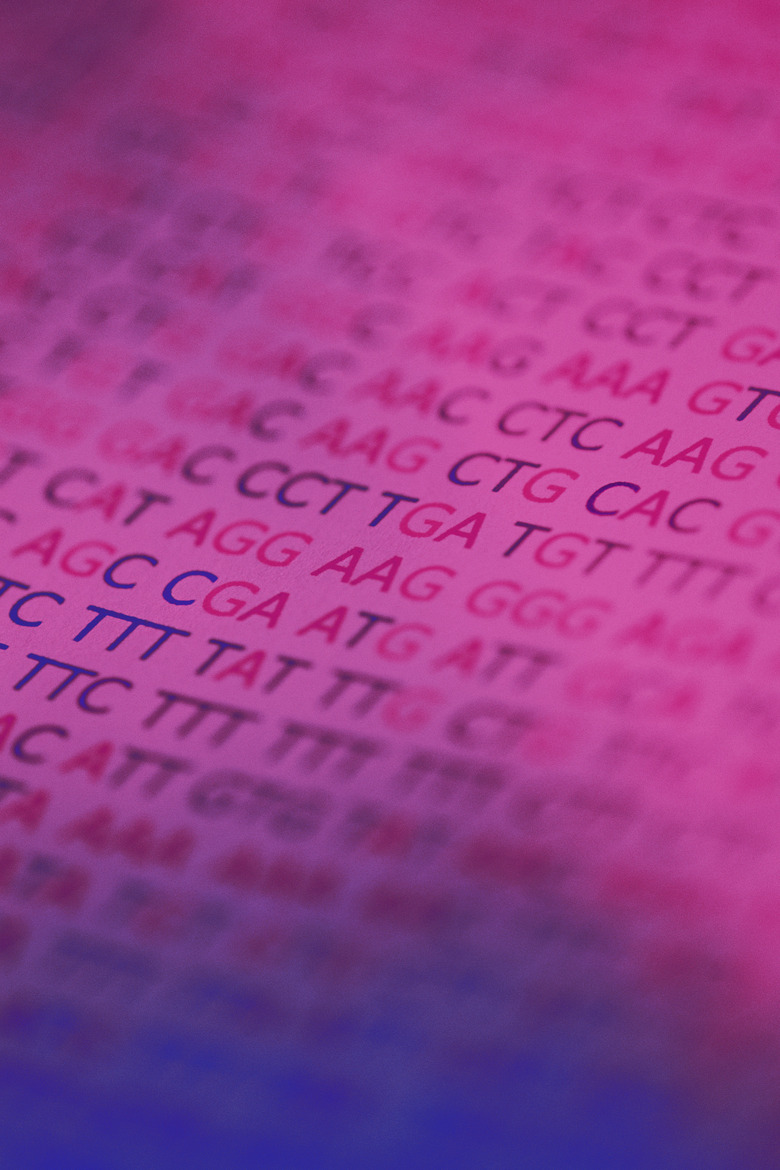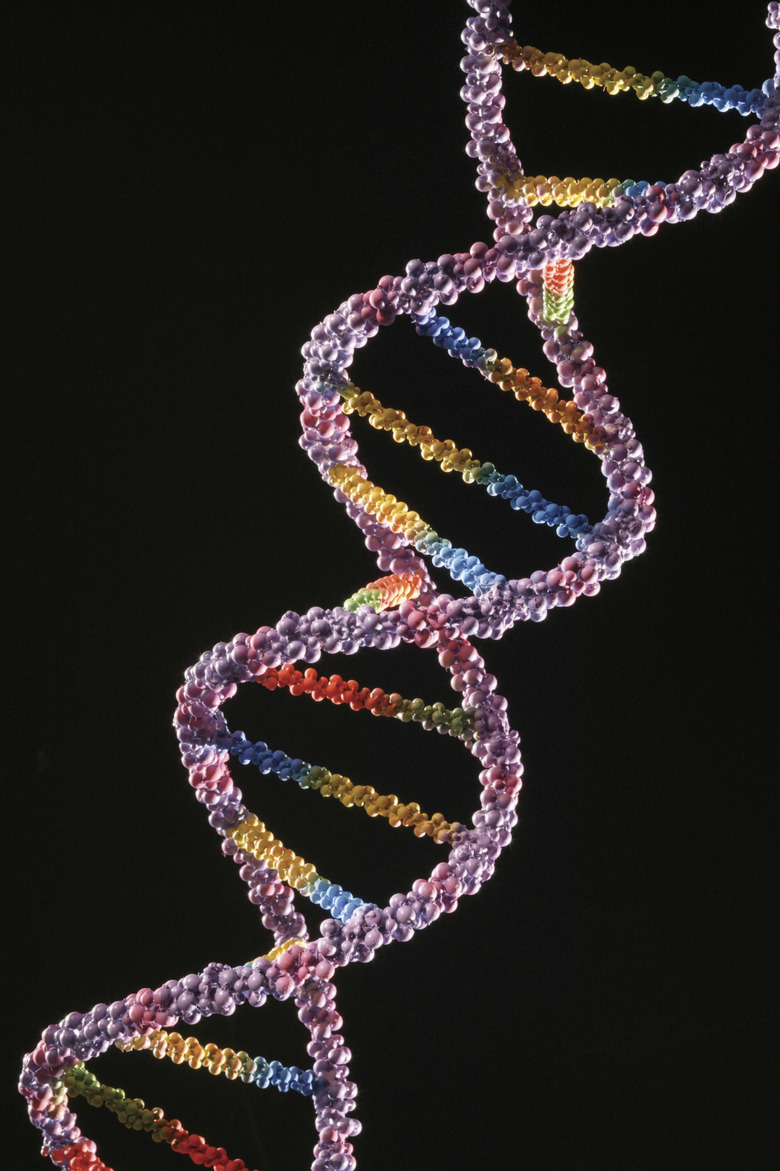How Does DNA Translation Work?
Translating genetic code from its deoxyribonucleic acid form consisting of a chain of four repeating letters to a final protein product consisting of amino acids is a well-understood process. One way to describe the process is to imagine a single strand of a chromosome being like a bookshelf filled with how-to books written in a foreign language. A translator may take one book from the shelf and begin to transcribe the code onto paper. He then translates the foreign characters into words that a reader can understand. The reader then proceeds to build a useful project based on the translated instructions.
DNA Basics
DNA Basics
DNA consists of two polynucleotide chains wrapped around each other in a double helix. Every nucleotide of both chains possesses a nitrogenous base. Each base has attached to it either an adenine (A), cytosine (C), guanine (G) or thymine (T) molecule. The two polynucleotide chains bond to each other via weak hydrogen bonds between C-and-G paired molecules and A-and-T paired molecules. This unique C-G/A-T bonding allows the DNA strands to separate temporarily, while an enzyme unzips the double helix into sections of single strands for transcription into strands of messenger RNA.
mRNA Basics
mRNA Basics
A strand of messenger RNA (mRNA) is an exact copy of a single strand of DNA, with the exception that each thymine (T) is replaced with a uracil (U) molecule. A chain of mRNA molecules consisting of G,C A, and U molecules is arranged in a triplet code such as CAC, UUA and CUG. This sequence of triplet codes is a copy of the DNA sequence GTGAATGAC. The three-letter code is later translated into protein by special RNA/protein complexes that recognize the three-letter code and build a strand of amino acids that matches the code. For example, the mRNA code AUG is matched with the amino acid methionine.
Transcription
Transcription
Transcription occurs when an RNA polymerase enzyme rides along a specific region of a single strand of DNA and synthesizes (transcribes) an mRNA copy. Typically, the mRNA strand is modified by being snipped in several specific spots by a special enzyme and then rejoined into a shorter mRNA strand that will code for a functional protein. Therefore, the original coding DNA strand is not directly translated into protein, but must go through an alteration step as mRNA to remove nonsense sequences that do not code for a gene.
Translation
Translation
Translation is the final step of translating a DNA sequence into a functional protein. RNA/protein complex molecules called "ribosomes" attach themselves to the modified mRNA strand and translate the strand into a chain of protein molecules. This is accomplished by transfer RNA (tRNA) molecules that carry specific amino acids to the ribosomes where three-letter codes are read and matched with specific amino acids. Once the amino acid chain is synthesized, it typically automatically folds into a conformation that makes it functional. This is why a single DNA mutation can be disastrous. The DNA mutation is transcribed into a three-letter mRNA code that, in turn, codes for the wrong amino acid. This thereby prevents the final amino acid chain from folding correctly into a functional protein.
References
- "Genes VIII"; Benjamin Lewin; 2004
Cite This Article
MLA
Boyer, Timothy. "How Does DNA Translation Work?" sciencing.com, https://www.sciencing.com/dna-translation-work-10050320/. 24 April 2017.
APA
Boyer, Timothy. (2017, April 24). How Does DNA Translation Work?. sciencing.com. Retrieved from https://www.sciencing.com/dna-translation-work-10050320/
Chicago
Boyer, Timothy. How Does DNA Translation Work? last modified August 30, 2022. https://www.sciencing.com/dna-translation-work-10050320/

